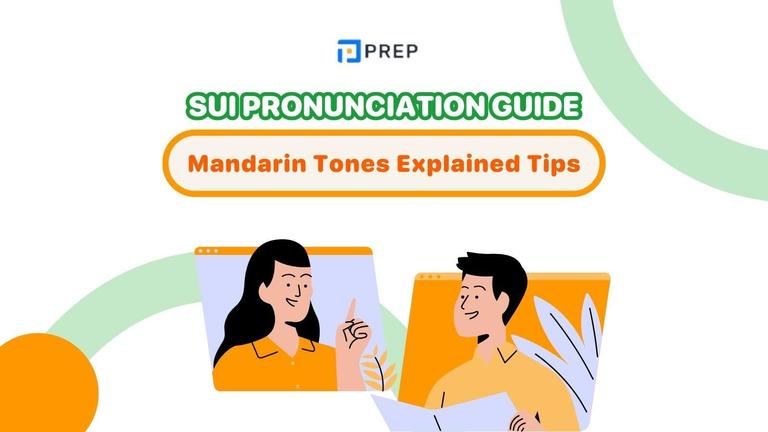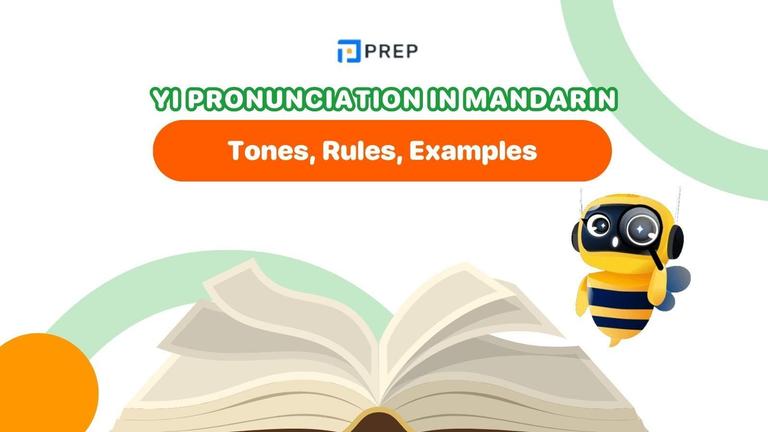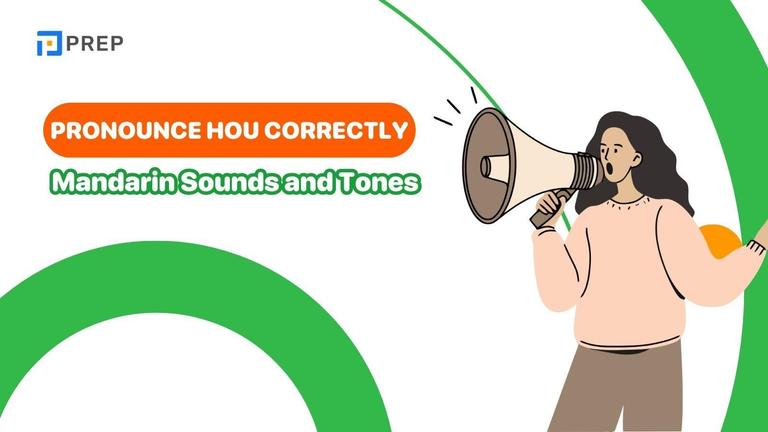Qing Pronunciation: Meaning, Tones, and Common Errors
The word “Qing” in Mandarin can change meaning with tones, from clear (清) to feeling (情) or please (请). This guide explains its Pinyin structure, IPA pronunciation, and tone breakdown. You’ll also learn common mistakes and practical tips to master Qing pronunciation.
I. What Does “Qing” Mean in Mandarin?
The syllable “qing” appears in many commonly used Chinese words, but its meaning varies depending on the tone used with it. In Mandarin, one syllable can have several meanings—each with its own character, pronunciation, and usage. That’s why learning how to pronounce “qing” with the correct tone is essential to avoid misunderstandings.
Here are some of the most frequently used Chinese characters with the pinyin “qing,” each with a different tone:
|
Character |
Pinyin + Tone |
Meaning |
Example Word & Translation |
|
请 |
qǐng – Tone 3 |
to ask, to request, please |
请问 (qǐng wèn) – “May I ask…?” |
|
清 |
qīng – Tone 1 |
clear, pure, clean |
清楚 (qīng chǔ) – “to be clear” |
|
情 |
qíng – Tone 2 |
emotion, feeling, affection |
感情 (gǎn qíng) – “emotion” |
|
庆 |
qìng – Tone 4 |
to celebrate |
庆祝 (qìng zhù) – “to celebrate” |
Each “qing” has a unique meaning and character, even though they are spelled the same in Pinyin. That’s why tone accuracy is one of the most important pronunciation goals for learners.
The word “qing” is often among the first encountered in beginner courses or exams like HSK 1–2, especially in phrases like “qǐng zuò” (please sit) or “qǐng wèn” (may I ask).
If you pronounce “qing” with the wrong tone, you might:
- Turn a polite phrase into something that makes no sense
- Confuse “emotion” with “clarity” or “celebration”
- Miss the tone recognition in listening tests
That’s why learning the four versions of “qing” and practicing their meanings in context is key to both spoken fluency and exam success.
II. How to Pronounce Qing in Mandarin
Although “qing” may look simple in pinyin, it includes distinct sound components that can be tricky to produce correctly—especially for English speakers. To pronounce “qing” accurately, you need to master both its phonetic structure and its tone variations.
The syllable “qing” is made up of two core parts:
- Initial “q”:
- It’s a voiceless, aspirated consonant.
- Similar to “ch” in “cheese”, but pronounced further forward, with the tongue tip behind the lower teeth.
- Requires a soft flow of air — don’t overemphasize it like a hard “k” or “ts.”
- Final “ing”:
- This nasal final is pronounced like “-ing” in English, but with more tension and a slightly higher tongue position.
- Do not shorten it to “in.”
- IPA: The full pronunciation of “qing” is /t͡ɕʰiŋ/.
When combined, “q + ing” creates a gentle-but-precise sound: something like “cheeng” — but with different tongue positioning and airflow.
How Tones Affect Qing Pronunciation
Mandarin is tonal, meaning that how you pitch “qing” changes both its sound and meaning. It can be pronounced with four different tones, each tied to a different character:
- qīng (清) – Tone 1: high and level
- qíng (情) – Tone 2: rising, like asking a question
- qǐng (请) – Tone 3: falling then rising
- qìng (庆) – Tone 4: strong and falling
Each tone involves a different pitch contour, which you can think of as musical notes. Practicing with tone illustrations or tone trainers (like on apps) can help develop correct muscle memory.
Pronunciation Practice Tips
- Slow down: Break “qing” into “q” and “ing” when starting out.
- Use minimal pairs: Compare “qing” to similar syllables:
- “qing” vs “jin” / “qing” vs “ching”
- “qing” vs “qin” – different finals
- Practice full words: Try real phrases to understand rhythm and tone flow:
- 请坐 (qǐng zuò) – Please sit
- 热情 (rè qíng) – Enthusiastic
- 清楚 (qīng chǔ) – Clear
III. Common Mistakes in Qing Pronunciation
Even though “qing” is a short and simple-looking pinyin syllable, it’s one that many learners mispronounce—sometimes without realizing it. These mistakes can lead to misunderstood words, incorrect tones, or a heavy foreign accent that affects overall communication.
Saying “ching” or “tsing” Instead of “qing”
- Many English speakers replace the Mandarin “q” with “ch” (as in chimp) or “ts”, thinking they sound similar.
- But in Mandarin, “q” is a distinct, voiceless, aspirated alveolo-palatal sound produced with the tongue behind the lower front teeth, not the upper hard palate like “ch”.
Fix it:
- Use minimal pairs to compare:
- “qīng” vs “chīng” (no real word in standard Mandarin, but contrast helps)
- “qīng” vs “jīng” (closer tongue position, but less air)
- Record yourself and listen back at a slow pace — apps like Speechling or Google Translate Voice can help.
Ignoring or Flattening the Tone
- Learners often pronounce “qing” without applying the proper tone, treating it as a flat sound.
- Since Chinese is a tonal language, omitting or misplacing a tone turns “qing” into a different word entirely.
Examples:
- qǐng (Tone 3) → please
- qīng (Tone 1) → clear
- qìng (Tone 4) → celebration
Calling someone to “celebrate” when you meant to “ask” is a tone slip that could confuse native speakers.
Fix it:
- Practice the same sound across tones: “qīng, qíng, qǐng, qìng”
- Use tone trainer apps, flashcards with tone markings, or even sing the tones aloud to internalize each pitch pattern
Clipping the “-ing” Ending
- Another issue is cutting the “ing” final too short or pronouncing it like “in”, which blurs the vowel and nasal finish.
- This makes “qing” sound like “qin” (琴 – instrument), causing confusion.
Fix it:
- Stretch the vowel + nasal: aim for a full “eeeng” sound
- Isolate and repeat “ing” until it feels natural, then add the “q” initial
Mastering the pronunciation of “qing” in Mandarin requires more than just matching letters to sounds—it calls for understanding tones, tongue placement, and context. Whether you're saying “please” (qǐng), describing clarity (qīng), or talking about feelings (qíng), getting the pronunciation right ensures your message comes through clearly and confidently.
Keep improving your Mandarin pronunciation with PREP’s focused guides, speaking tools, and real-world examples—designed to help you build clarity, tone accuracy, and cultural fluency one word at a time.

Hi I'm Chloe, and I am currently serving as an Product Content Administrator at Prep Education. With over five years of experience in independent online IELTS study and exam preparation, I am confident in my ability to support learners in achieving their highest possible scores.
Comment
Premium content
View allPersonalized roadmap
Most read












